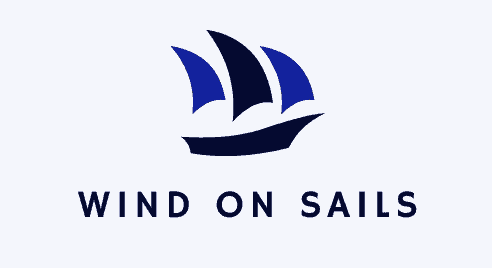

The Ultimate Guide to Sail Boat Designs: Exploring Sail Shape, Masts and Keel Types in 2023
- June 4, 2023
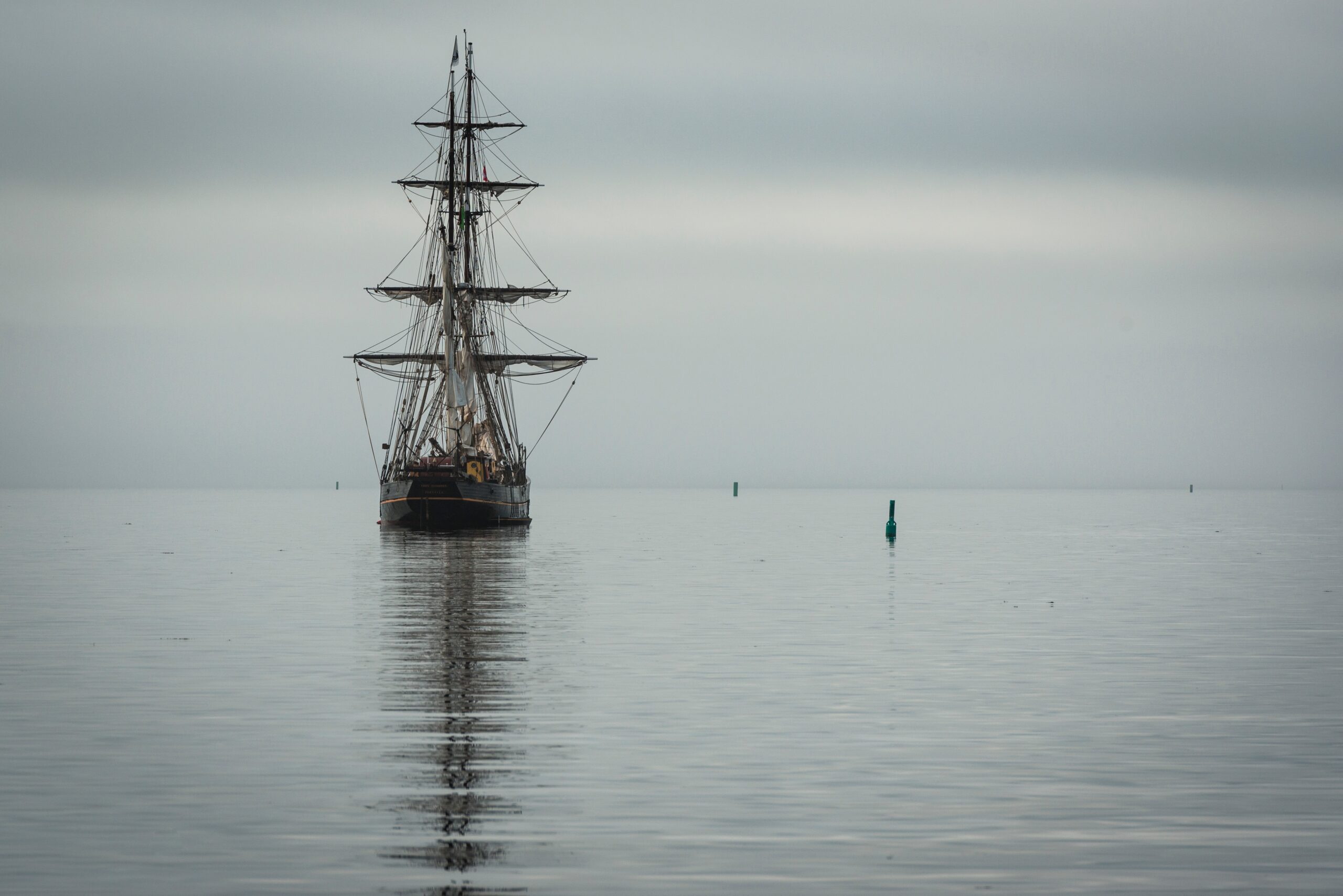
When it comes to sail boat designs, there is a wide array of options available, each with its own unique characteristics and advantages. From the shape of the sails to the number of masts and the type of keel, every aspect plays a crucial role in determining a sailboat’s performance, stability, and manoeuvrability. In this comprehensive guide, we will delve into the fascinating world of sail boat designs, exploring the various elements and their significance.
Table of Contents
The sail shape is a fundamental aspect of sail boat design, directly impacting its speed, windward performance, and maneuverability. There are several types of sail shapes, including:
1. Bermuda Rig:
The Bermuda rig is a widely used sail shape known for its versatility and performance. It features a triangular mainsail and a jib, offering excellent maneuverability and the ability to sail close to the wind. The Bermuda rig’s design allows for efficient use of wind energy, enabling sailboats to achieve higher speeds. The tall, triangular mainsail provides a larger surface area for capturing the wind, while the jib helps to balance the sail plan and optimize performance. This rig is commonly found in modern recreational sailboats and racing yachts. Its sleek and streamlined appearance adds to its aesthetic appeal, making it a popular choice among sailors of all levels of experience.
2. Gaff Rig:
The Gaff rig is a classic sail shape that exudes elegance and nostalgia. It features a four-sided mainsail with a gaff and a topsail, distinguishing it from other sail designs. The gaff, a horizontal spar, extends diagonally from the mast, providing additional area for the mainsail. This configuration allows for a taller and more powerful sail, making the Gaff rig particularly suited for downwind sailing. The Gaff rig offers a traditional aesthetic and is often found in vintage and classic sailboats, evoking a sense of nostalgia for a bygone era of maritime exploration. The distinctive shape of the Gaff rig, with its graceful curves and intricate rigging, adds a touch of timeless charm to any sailboat that dons this rig.
3. Lateen Rig:
The Lateen rig is a unique and versatile sail design that has been used for centuries in various parts of the world. It features a triangular sail that is rigged on a long yard, extending diagonally from the mast. This configuration allows for easy adjustment of the sail’s angle to catch the wind efficiently, making the Lateen rig suitable for a wide range of wind conditions. The Lateen rig is known for its ability to provide both power and maneuverability, making it ideal for small to medium-sized sailboats and traditional vessels like dhow boats. Its versatility allows sailors to navigate narrow waterways and make tight turns with ease. The distinctive silhouette of a sailboat with a Lateen rig, with its sleek triangular sail and graceful curves, evokes a sense of adventure and a connection to seafaring traditions from around the world.
Number of Masts
The number of masts in a sail boat design affects its stability, sail area, and overall performance. Let’s explore a few common configurations:
1. Sloop Rig:
The sloop rig is one of the most popular and versatile sail boat designs, favoured by sailors around the world. It consists of a single mast and two sails—a mainsail and a jib. The sloop rig offers simplicity, ease of handling, and excellent performance across various wind conditions. The mainsail, situated behind the mast, provides the primary driving force, while the jib helps to balance the sail plan and improve manoeuvrability. This configuration allows for efficient upwind sailing, as the sails can be trimmed independently to optimize performance. The sloop rig is commonly found in modern recreational sailboats due to its versatility, enabling sailors to enjoy cruising, racing, or day sailing with ease. Its streamlined design and sleek appearance on the water make it both aesthetically pleasing and efficient, capturing the essence of the sailing experience.
2. Cutter Rig:
The cutter rig is a versatile and robust sail boat design that offers excellent performance, especially in challenging weather conditions. It features a single mast and multiple headsails, typically including a larger headsail forward of the mast, known as the cutter rig’s distinguishing feature. This configuration provides a wide range of sail combinations, enabling sailors to adjust the sail plan to suit varying wind strengths and directions. The larger headsail enhances the boat’s downwind performance, while the smaller headsails offer increased flexibility and improved balance. The cutter rig excels in heavy weather, as it allows for easy reefing and depowering by simply reducing or eliminating the headsails. This design is commonly found in offshore cruising sailboats and has a strong reputation for its reliability and seaworthiness. The cutter rig combines versatility, stability, and the ability to handle adverse conditions, making it a preferred choice for sailors seeking both performance and safety on their voyages.
3. Ketch Rig:
The Ketch rig is a sail boat design characterized by the presence of two masts, with the main mast being taller than the mizzen mast. This configuration offers a divided sail plan, providing sailors with increased flexibility, balance, and versatility. The main advantage of the Ketch rig is the ability to distribute the sail area across multiple sails, allowing for easier handling and reduced stress on each individual sail. The mizzen mast, positioned aft of the main mast, helps to improve the sailboat’s balance, especially in strong winds or when sailing downwind. The Ketch rig is often favoured by cruisers and long-distance sailors as it provides a range of sail combinations suitable for various wind conditions. With its distinctive double-mast appearance, the Ketch rig exudes a classic charm and is well-regarded for its stability, comfort, and suitability for extended journeys on the open seas.
The keel is the part of the sail boat that provides stability and prevents drifting sideways due to the force of the wind. Here are some common keel types:
1. Fin Keel:
The fin keel is a popular keel type in sail boat design known for its excellent upwind performance and stability. It is a long, narrow keel that extends vertically from the sailboat’s hull, providing a substantial amount of ballast to counterbalance the force of the wind. The fin keel’s streamlined shape minimizes drag and enables the sailboat to cut through the water with efficiency. This design enhances the sailboat’s ability to sail close to the wind, making it ideal for racing and performance-oriented sailboats. The fin keel also reduces leeway, which refers to the sideways movement of the boat caused by the wind. This improves the sailboat’s ability to maintain a straight course and enhances overall manoeuvrability. Sailboats with fin keels are commonly found in coastal and offshore racing as well as cruising vessels, where stability and responsiveness are valued. The fin keel’s combination of performance, stability, and reduced leeway makes it a preferred choice for sailors seeking speed and agility on the water.
2. Full Keel:
The full keel is a design known for its exceptional stability and seaworthiness. It extends along the entire length of the sailboat, providing a continuous surface that adds substantial weight and ballast. This configuration offers significant advantages in terms of tracking and resistance to drifting sideways. The full keel’s deep draft helps to prevent leeway and allows the sailboat to maintain a steady course even in adverse conditions. Its robust construction enhances the sailboat’s ability to handle heavy seas and provides a comfortable ride for sailors on extended journeys. While full keel sailboats may sacrifice some manoeuvrability, their stability and predictable handling make them a popular choice for offshore cruising and long-distance voyages. The full keel design has stood the test of time and is often associated with classic and traditional sailboat aesthetics, appealing to sailors seeking reliability, comfort, and the ability to tackle challenging ocean passages with confidence.
3. Wing Keel:
The wing keel is a unique keel design that offers a combination of reduced draft and improved stability. It features a bulbous extension or wings on the bottom of the keel, which effectively increases the keel’s surface area. This design allows sailboats to navigate in shallower waters without sacrificing stability and performance. The wings create additional lift and prevent excessive leeway, enhancing the sailboat’s upwind capabilities. The reduced draft of the wing keel enables sailors to explore coastal areas and anchor in shallower anchorages that would be inaccessible to sailboats with deeper keels. The wing keel is particularly well-suited for sailboats in areas with variable water depths or tidal ranges. This keel design offers the advantages of increased manoeuvrability and improved performance while maintaining stability, making it a popular choice for sailors seeking versatility in a range of sailing environments.
In the vast world of sail boat designs, sail shape, number of masts, and keel types play pivotal roles in determining a boat’s performance and handling characteristics. Whether you’re a recreational sailor, a racer, or a cruiser, understanding these design elements can help you make informed choices when selecting a sailboat.
Remember to consider your specific needs, preferences, and intended use of the boat when choosing a sail boat design. Each design has its strengths and weaknesses, and finding the perfect combination will greatly enhance your sailing experience.
By gaining a deeper understanding of sail boat designs, you can embark on your next sailing adventure with confidence and make the most of the wind’s power.
Related Posts

Sailing Navigation: Exploring Modern Techniques for Navigating the Seas in 2023
- June 10, 2023
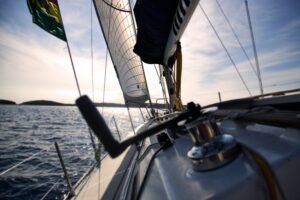
Sailing in Different Directions: Harnessing the Wind’s Power in 2023
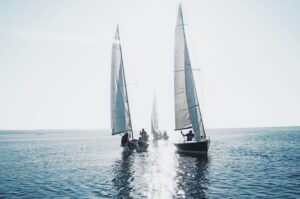
Sailing Terms Demystified: A Comprehensive Guide to 14 Common Sailing Terminology
- May 28, 2023

INTRODUCTION TO SAILBOAT DESIGN: A TECHNICAL EXPLORATION
Sailboat design is a complex and fascinating field that blends engineering, hydrodynamics, and aesthetics to create vessels that harness the power of the wind for propulsion. In this highly technical article, we will delve into the key aspects of sailboat design, from methodology to evaluation.
1) Design Methodology
Designing a sailboat is a meticulous process that begins with defining the vessel’s purpose and performance goals. It involves understanding the intended use, whether it’s racing, cruising, or a combination of both. Sailboat designers must also consider regulatory requirements and safety standards.
Once the design objectives are established, naval architects employ various computational tools and simulations to create a preliminary design. These tools help in predicting the boat’s performance characteristics and optimizing its geometry.
Design methodology also encompasses market research to understand current trends and customer preferences. This information is critical for creating a sailboat that appeals to potential buyers.
2) Hull Design
The hull is the heart of any sailboat. Its shape determines how the boat interacts with the water. Hull design encompasses the choice of hull form, its dimensions, and the material used. The hull’s shape affects its hydrodynamic performance, stability, and overall handling.
For example, a narrow hull design with a deep V-shape is ideal for speed, while a wider, flatter hull provides stability for cruising. The choice of materials, such as fiberglass or aluminum, impacts the boat’s weight and durability.
The hull design is a balance between achieving efficient hydrodynamics and providing interior space for accommodations. As a designer, finding this equilibrium is a constant challenge.

3) Keel & Rudder Design
The keel and rudder are critical components of a sailboat’s underwater structure. The keel provides stability by preventing the boat from tipping over, while the rudder controls its direction. Keel design involves selecting the keel type (fin, bulb, or wing) and optimizing its shape for maximum hydrodynamic efficiency.
Rudder’s design focuses on ensuring precise control and maneuverability. Both components must be carefully integrated into the hull’s design to maintain balance and performance.
Keel and rudder design can be particularly challenging because they influence the boat’s behavior in different ways. A well-designed keel adds stability but also increases draft, limiting where the boat can sail. Rudder design must account for both responsiveness and the risk of stalling at high speeds.
4) Sail & Rig Design
Sail and rig design play a pivotal role in harnessing wind power. Sail choice, size, and shape are tailored to the boat’s intended use and performance goals. Modern sail materials like carbon fiber offer lightweight and durable options.
The rig design involves selecting the type of mast (single or multiple), rigging configuration, and mast height. These choices influence the sailboat’s stability, maneuverability, and ability to handle varying wind conditions.
Balancing the sails and rig for optimal performance is a meticulous task. The sail plan should be designed to efficiently convert wind energy into forward motion while allowing for easy adjustments to adapt to changing conditions.
5) Balance
Balancing a sailboat is crucial for its performance and safety. Achieving the right balance involves a delicate interplay between the hull, keel, rudder, and sail plan. Proper balance ensures the boat remains stable and responds predictably to helm inputs, even in changing wind conditions.
Balance is not a static concept but something that evolves as the boat sails in different wind and sea conditions. Designers must anticipate how changes in load, wind angle, and sail trim will affect the boat’s balance.
Achieving balance is both an art and a science, and it often requires iterative adjustments during the design and testing phases to achieve optimal results.
6) Propulsion
While sailboats primarily rely on wind propulsion, auxiliary propulsion systems like engines are essential for maneuvering in harbors or during calm conditions. Integrating propulsion systems seamlessly into the boat’s design requires careful consideration of engine placement, fuel storage, and exhaust systems.
The choice of propulsion system, whether it’s a traditional diesel engine or a more eco-friendly electric motor, also impacts the boat’s weight distribution and overall performance.
7) Scantling
Scantling refers to the selection of structural components and their dimensions to ensure the boat’s strength and integrity. It involves determining the appropriate thickness of the hull, deck, and other structural elements to withstand the stresses encountered at sea.
Scantling is a critical aspect of sailboat design, as it directly relates to safety. A well-designed boat must be able to withstand the forces exerted on it by waves, wind, and other environmental factors.
8) Stability
Stability is a critical safety factor in sailboat design. Both upright hydrostatics and large-angle stability must be carefully assessed and optimized. This involves evaluating the boat’s center of gravity, ballast, and hull shape.
Achieving the right balance between initial stability, which provides comfort to passengers, and ultimate stability, which ensures safety in adverse conditions, is a delicate task. Designers often use stability curves and computer simulations to fine-tune these characteristics.
9) Layout
The layout of a sailboat’s interior and deck spaces is a blend of functionality and comfort. Designers must consider the ergonomics of living and working aboard the vessel, including cabin layout, galley design, and storage solutions. The deck layout influences crew movements and sail handling.
Layout design also extends to considerations like ventilation, lighting, and noise control. Sailboats are unique in that they must provide both comfortable living spaces and efficient workspaces for handling sails and navigation.
10) Design Evaluation
The final phase of sailboat design involves rigorous evaluation and testing. Computational fluid dynamics (CFD) simulations, tank testing, and real-world sea trials help validate the design’s performance predictions. Any necessary adjustments are made to fine-tune the vessel’s behavior on the water.
The evaluation phase is where the theoretical aspects of design meet the practical realities of the sea. It’s a crucial step in ensuring that the sailboat not only meets but exceeds its performance and safety expectations.
Conclusion:
In conclusion, sailboat design is a highly technical field that requires a deep understanding of hydrodynamics, engineering principles, and materials science. Naval architects and yacht designers meticulously navigate through the intricacies of hull design, keel and rudder configuration, sail and rig design, balance, propulsion, scantling, stability, layout, and design evaluation to create vessels that excel in both form and function. The harmonious integration of these elements results in sailboats that are not just seaworthy but also a joy to sail, and this process is a testament to the art and science of sailboat design.
Click here to read about “ HARNESSING THE POWER OF ARTIFICIAL INTELLIGENCE IN BOAT DESIGN “
Follow my Linkedin Newsletter here: “LinkedIn Newsletter”
0 comments Leave a reply
Save my name, email, and website in this browser for the next time I comment.
Recent Posts
- THE CHALLENGES Of SMALL CRAFT DESIGN COMPARED TO LARGER VESSELS
- UNDERSTANDING ROYALTY AGREEMENTS & DESIGN OWNERSHIP IN BOAT DESIGN
- FREQUENTLY ASKED QUESTIONS TO A BOAT DESIGNER: A COMPILATION
- ADVANTAGES OF HDPE COLLAR OVER REGULAR RIB
- HDPE’S EXCLUSIVE FEATURES DISTINCT FROM TRADITIONAL BOAT MATERIALS
Recent Comments
- Casey Lim on HDPE BOAT PLANS
- BRYN BONGBONG on HDPE BOAT PLANS
- Keith on HDPE BOAT PLANS
- Daniel Desauriers on WHY HDPE BOATS?
- November 2023
- October 2023
- February 2023
- January 2023
- September 2022
- January 2021
- ARTIFICIAL INTELLIGENCE
- boatbuilder
- BOAT CONSTRUCTION TECHNIQUES
- BOAT DESIGN COST
- boatdesign process
- CAREER PATHWAYS
- COMMERCIAL BOATS
- conventional boats
- custom boat
- DESIGN ADMINISTRATION
- DESIGN SPIRAL
- EXTREME CONDITIONS
- Freelance advantage
- freelance boat designer
- FRP Boat without Mold
- HDPE Collar
- INDIA'S MARITIME
- INVENTORY MANAGEMENT
- ISO STANDARDS
- Mass Production
- Monhull vs Catamaran
- Naval Architect
- Naval Architecture
- PLANING HULL
- Project Management
- Proven Hull
- PSYCHOLOGY OF BOAT DESIGN
- QUALITY CONTROL
- RECREATIONAL BOATS
- ROYALTY AGREEMENTS
- SANDWICH VS SINGLE SKIN
- SOLOPRENEUR
- YACHT DESIGN COURSE

My Cruiser Life Magazine
Basics of Sailboat Hull Design – EXPLAINED For Owners
There are a lot of different sailboats in the world. In fact, they’ve been making sailboats for thousands of years. And over that time, mankind and naval architects (okay, mostly the naval architects!) have learned a thing or two.
If you’re wondering what makes one sailboat different from another, consider this article a primer. It certainly doesn’t contain everything you’d need to know to build a sailboat, but it gives the novice boater some ideas of what goes on behind the curtain. It will also provide some tips to help you compare different boats on the water, and hopefully, it will guide you towards the sort of boat you could call home one day.
Table of Contents
Displacement hulls, semi displacement hulls, planing hulls, history of sailboat hull design, greater waterline length, distinctive hull shape and fin keel designs, ratios in hull design, the hull truth and nothing but the truth, sail boat hull design faqs.

Basics of Hull Design
When you think about a sailboat hull and how it is built, you might start thinking about the shape of a keel. This has certainly spurred a lot of different designs over the years, but the hull of a sailboat today is designed almost independently of the keel.
In fact, if you look at a particular make and model of sailboat, you’ll notice that the makers often offer it with a variety of keel options. For example, this new Jeanneau Sun Odyssey comes with either a full fin bulb keel, shallow draft bulb fin, or very shallow draft swing keel. Where older long keel designs had the keel included in the hull mold, today’s bolt-on fin keel designs allow the manufacturers more leeway in customizing a yacht to your specifications.
What you’re left with is a hull, and boat hulls take three basic forms.
- Displacement hull
- Semi-displacement hulls
- Planing hulls
Most times, the hull of a sailboat will be a displacement hull. To float, a boat must displace a volume of water equal in weight to that of the yacht. This is Archimedes Principle , and it’s how displacement hulled boats get their name.
The displacement hull sailboat has dominated the Maritimes for thousands of years. It has only been in the last century that other designs have caught on, thanks to advances in engine technologies. In short, sailboats and sail-powered ships are nearly always displacement cruisers because they lack the power to do anything else.
A displacement hull rides low in the water and continuously displaces its weight in water. That means that all of that water must be pushed out of the vessel’s way, and this creates some operating limitations. As it pushes the water, water is built up ahead of the boat in a bow wave. This wave creates a trough along the side of the boat, and the wave goes up again at the stern. The distance between the two waves is a limiting factor because the wave trough between them creates a suction.
This suction pulls the boat down and creates drag as the vessel moves through the water. So in effect, no matter how much power is applied to a displacement hulled vessel, it cannot go faster than a certain speed. That speed is referred to as the hull speed, and it’s a factor of a boat’s length and width.
For an average 38 foot sailboat, the hull speed is around 8.3 knots. This is why shipping companies competed to have the fastest ship for many years by building larger and larger ships.
While they might sound old-school and boring, displacement hulls are very efficient because they require very little power—and therefore very little fuel—to get them up to hull speed. This is one reason enormous container ships operate so efficiently.
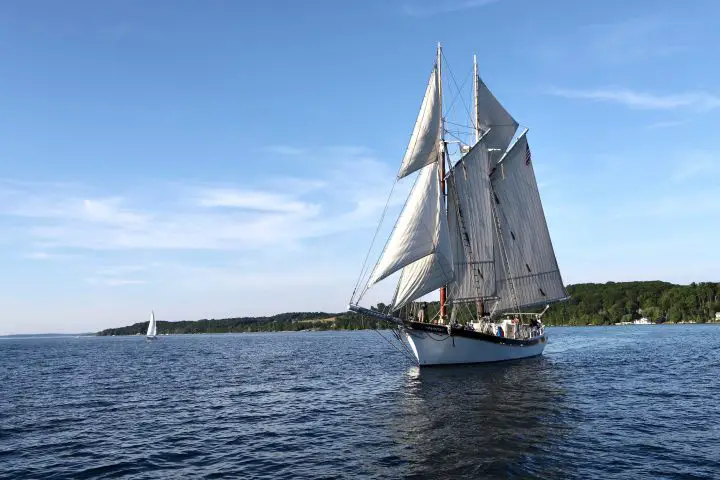
Of course, living in the 21st century, you undoubtedly have seen boats go faster than their hull speed. Going faster is simply a matter of defeating the bow wave in one way or another.
One way is to build the boat so that it can step up onto and ride the bow wave like a surfer. This is basically what a semi-displacement hull does. With enough power, this type of boat can surf its bow wave, break the suction it creates and beat its displacement hull speed.
With even more power, a boat can leave its bow wave in the dust and zoom past it. This requires the boat’s bottom to channel water away and sit on the surface. Once it is out of the water, any speed is achievable with enough power.
But it takes enormous amounts of power to get a boat on plane, so planing hulls are hardly efficient. But they are fast. Speedboats are planing hulls, so if you require speed, go ahead and research the cost of a speedboat .
The most stable and forgiving planing hull designs have a deep v hull. A very shallow draft, flat bottomed boat can plane too, but it provides an unforgiving and rough ride in any sort of chop.
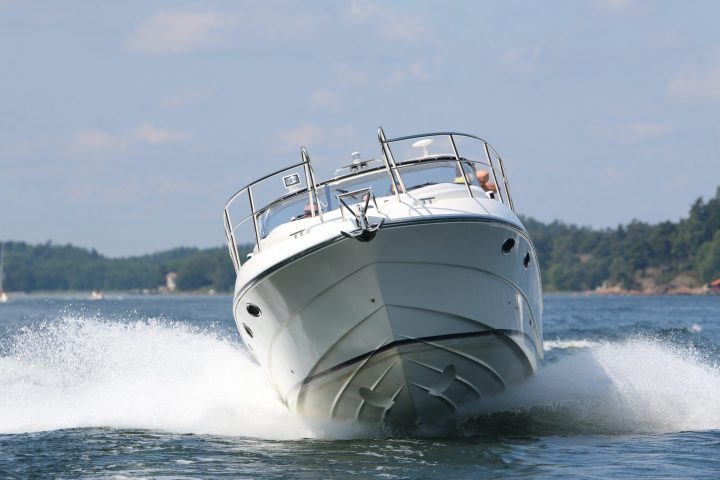
If you compare the shapes of the sailboats of today with the cruising boat designs of the 1960s and 70s, you’ll notice that quite a lot has changed in the last 50-plus years. Of course, the old designs are still popular among sailors, but it’s not easy to find a boat like that being built today.
Today’s boats are sleeker. They have wide transoms and flat bottoms. They’re more likely to support fin keels and spade rudders. Rigs have also changed, with the fractional sloop being the preferred setup for most modern production boats.
Why have boats changed so much? And why did boats look so different back then?
One reason was the racing standards of the day. Boats in the 1960s were built to the IOR (International Offshore Rule). Since many owners raced their boats, the IOR handicaps standardized things to make fair play between different makes and models on the racecourse.
The IOR rule book was dense and complicated. But as manufacturers started building yachts, or as they looked at the competition and tried to do better, they all took a basic form. The IOR rule wasn’t the only one around . There were also the Universal Rule, International Rule, Yacht Racing Association Rul, Bermuda Rule, and a slew of others.
Part of this similarity was the rule, and part of it was simply the collective knowledge and tradition of yacht building. But at that time, there was much less distance between the yachts you could buy from the manufacturers and those setting off on long-distance races.
Today, those wishing to compete in serious racing a building boat’s purpose-built for the task. As a result, one-design racing is now more popular. And similarly, pleasure boats designed for leisurely coastal and offshore hops are likewise built for the task at hand. No longer are the lines blurred between the two, and no longer are one set of sailors “making do” with the requirements set by the other set.
Modern Features of Sailboat Hull Design
So, what exactly sets today’s cruising and liveaboard boats apart from those built-in decades past?
Today’s designs usually feature plumb bows and the maximum beam carried to the aft end. The broad transom allows for a walk-through swim platform and sometimes even storage for the dinghy in a “garage.”
The other significant advantage of this layout is that it maximizes waterline length, which makes a faster boat. Unfortunately, while the boats of yesteryear might have had lovely graceful overhangs, their waterline lengths are generally no match for newer boats.
The wide beam carried aft also provides an enormous amount of living space. The surface area of modern cockpits is nothing short of astounding when it comes to living and entertaining.
If you look at the hull lines or can catch a glimpse of these boats out of the water, you’ll notice their underwater profiles are radically different too. It’s hard to find a full keel design boat today. Instead, fin keels dominate, along with high aspect ratio spade rudders.
The flat bottom boats of today mean a more stable boat that rides flatter. These boats can really move without heeling over like past designs. Additionally, their designs make it possible in some cases for these boats to surf their bow waves, meaning that with enough power, they can easily achieve and sometimes exceed—at least for short bursts—their hull speeds. Many of these features have been found on race boats for decades.
There are downsides to these designs, of course. The flat bottom boats often tend to pound when sailing upwind , but most sailors like the extra speed when heading downwind.
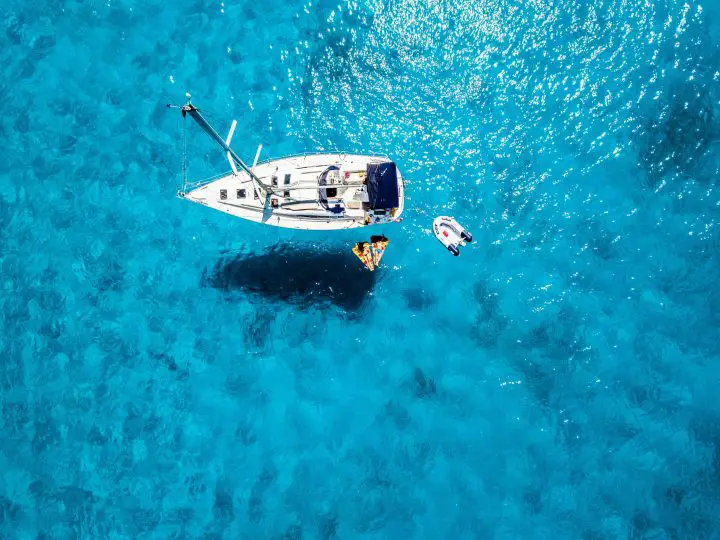
How Do You Make a Stable Hull
Ultimately, the job of a sailboat hull is to keep the boat afloat and create stability. These are the fundamentals of a seaworthy vessel.
There are two types of stability that a design addresses . The first is the initial stability, which is how resistant to heeling the design is. For example, compare a classic, narrow-beamed monohull and a wide catamaran for a moment. The monohull has very little initial stability because it heels over in even light winds. That doesn’t mean it tips over, but it is relatively easy to make heel.
A catamaran, on the other hand, has very high initial stability. It resists the heel and remains level. Designers call this type of stability form stability.
There is also secondary stability, or ultimate stability. This is how resistant the boat is to a total capsize. Monohull sailboats have an immense amount of ballast low in their keels, which means they have very high ultimate stability. A narrow monohull has low form stability but very high ultimate stability. A sailor would likely describe this boat as “tender,” but they would never doubt its ability to right itself after a knock-down or capsize.
On the other hand, the catamaran has extremely high form stability, but once the boat heels, it has little ultimate stability. In other words, beyond a certain point, there is nothing to prevent it from capsizing.
Both catamarans and modern monohulls’ hull shapes use their beams to reduce the amount of ballast and weight . A lighter boat can sail fast, but to make it more stable, naval architects increase the beam to increase the form stability.
If you’d like to know more about how stable a hull is, you’ll want to learn about the Gz Curve , which is the mathematical calculation you can make based on a hull’s form and ultimate stabilities.
How does a lowly sailor make heads or tails out of this? You don’t have to be a naval architect when comparing different designs to understand the basics. Two ratios can help you predict how stable a design will be .
The first is the displacement to length ratio . The formula to calculate it is D / (0.01L)^3 , where D is displacement in tons and L is waterline length in feet. But most sailboat specifications, like those found on sailboatdata.com , list the D/L Ratio.
This ratio helps understand how heavy a boat is for its length. Heavier boats must move more water to make way, so a heavy boat is more likely to be slower. But, for the ocean-going cruiser, a heavy boat means a stable boat that requires much force to jostle or toss about. A light displacement boat might pound in a seaway, and a heavy one is likely to provide a softer ride.
The second ratio of interest is the sail area to displacement ratio. To calculate, take SA / (D)^0.67 , where SA is the sail area in square feet and D is displacement in cubic feet. Again, many online sites provide the ratio calculated for specific makes and models.
This ratio tells you how much power a boat has. A lower ratio means that the boat doesn’t have much power to move its weight, while a bigger number means it has more “get up and go.” Of course, if you really want to sail fast, you’d want the boat to have a low displacement/length and a high sail area/displacement.
Multihull Sailboat Hulls
Multihull sailboats are more popular than ever before. While many people quote catamaran speed as their primary interest, the fact is that multihulls have a lot to offer cruising and traveling boaters. These vessels are not limited to coastal cruising, as was once believed. Most sizable cats and trimarans are ocean certified.
Both catamarans and trimaran hull designs allow for fast sailing. Their wide beam allows them to sail flat while having extreme form stability.
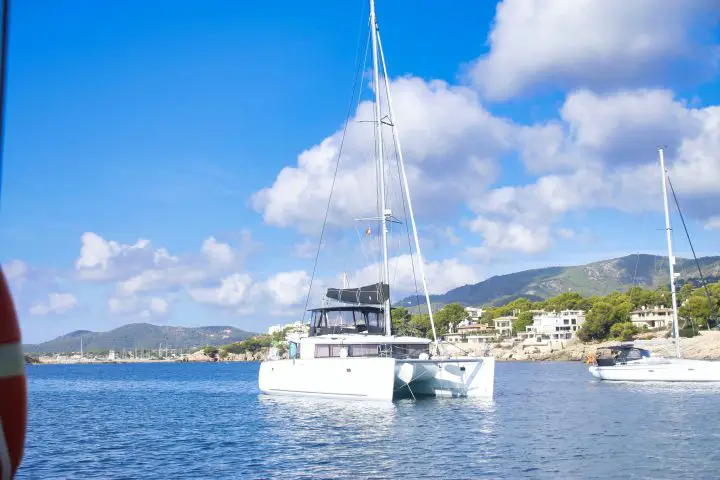
Catamarans have two hulls connected by a large bridge deck. The best part for cruisers is that their big surface area is full of living space. The bridge deck usually features large, open cockpits with connecting salons. Wrap around windows let in tons of light and fresh air.
Trimarans are basically monohulls with an outrigger hull on each side. Their designs are generally less spacious than catamarans, but they sail even faster. In addition, the outer hulls eliminate the need for heavy ballast, significantly reducing the wetted area of the hulls.
Boaters and cruising sailors don’t need to be experts in yacht design, but having a rough understanding of the basics can help you pick the right boat. Boat design is a series of compromises, and knowing the ones that designers and builders take will help you understand what the boat is for and how it should be used.
What is the most efficient boat hull design?
The most efficient hull design is the displacement hull. This type of boat sits low in the water and pushes the water out of its way. It is limited to its designed hull speed, a factor of its length. But cruising at hull speed or less requires very little energy and can be done very efficiently.
By way of example, most sailboats have very small engines. A typical 40-foot sailboat has a 50 horsepower motor that burns around one gallon of diesel every hour. In contrast, a 40-foot planing speedboat may have 1,000 horsepower (or more). Its multiple motors would likely be consuming more than 100 gallons per hour (or more). Using these rough numbers, the sailboat achieves about 8 miles per gallon, while the speedboat gets around 2 mpg.
What are sail boat hulls made of?
Nearly all modern sailboats are made of fiberglass.
Traditionally, boats were made of wood, and many traditional vessels still are today. There are also metal boats made of steel or aluminum, but these designs are less common. Metal boats are more common in expedition yachts or those used in high-latitude sailing.
Matt has been boating around Florida for over 25 years in everything from small powerboats to large cruising catamarans. He currently lives aboard a 38-foot Cabo Rico sailboat with his wife Lucy and adventure dog Chelsea. Together, they cruise between winters in The Bahamas and summers in the Chesapeake Bay.

IMAGES
VIDEO
COMMENTS
June 4, 2023. Sailing. When it comes to sail boat designs, there is a wide array of options available, each with its own unique characteristics and advantages. From the shape of the sails to the number of masts and the type of keel, every aspect plays a crucial role in determining a sailboat’s performance, stability, and manoeuvrability.
Sailboat design is a complex and fascinating field that blends engineering, hydrodynamics, and aesthetics to create vessels that harness the power of the wind for propulsion. In this highly technical article, we will delve into the key aspects of sailboat design, from methodology to evaluation. 1) Design Methodology.
Sail Boat Hull Design FAQs. Basics of Hull Design. When you think about a sailboat hull and how it is built, you might start thinking about the shape of a keel. This has certainly spurred a lot of different designs over the years, but the hull of a sailboat today is designed almost independently of the keel.
Small Sailboats; Design Basics; Pics, Data & KPIs. Sailboats under 30' Sailboats 30'-35; Sailboats 35'-40' Sailboats 40'-45' Sailboats 45'-50' Sailboats 50'-55' Sailboats over 55' Sails & Rigging. Rigging; Sails; Masts & Spars; Knots, Bends & Hitches; Sailboat Systems. The 12v Energy Equation; Electronics & Instrumentation; Getting Afloat ...
Sail Design: Art or Science? Two different boats, two different sail programs, and yet a surprising number of similarities: among them, the fact that even in this era of gee-whiz computer modeling, the human element still plays a major role in a sail’s ultimate success. Adam Cort. Updated: Aug 2, 2017. Original: Jan 9, 2013.